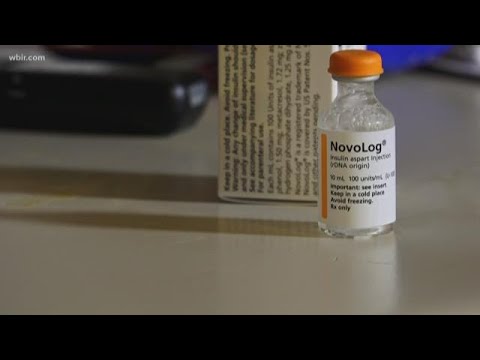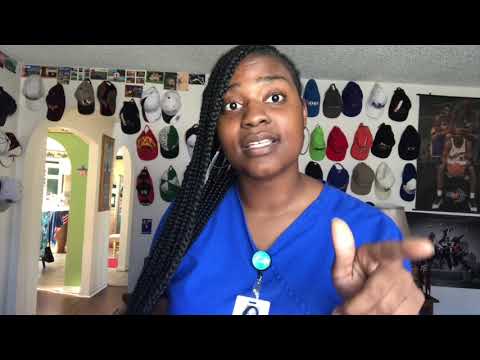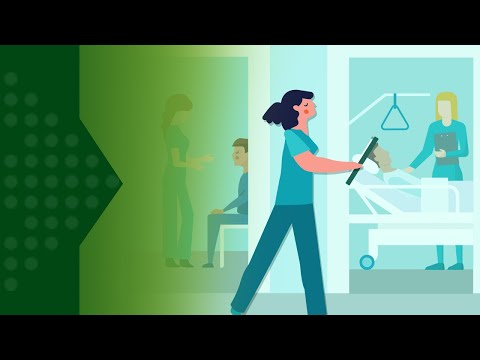Patient Assistance Programs for Diabetes Medications
Contents
- Introduction
- What are Patient Assistance Programs?
- Who is eligible for Patient Assistance Programs?
- What types of assistance do Patient Assistance Programs offer?
- How do Patient Assistance Programs work?
- What are the benefits of Patient Assistance Programs?
- What are the drawbacks of Patient Assistance Programs?
- How to find out if you are eligible for a Patient Assistance Program?
- How to apply for a Patient Assistance Program?
- What to do if you are not eligible for a Patient Assistance Program?
Many people with diabetes struggle to afford their medications. Here is a list of patient assistance programs that can help.
Checkout this video:
Introduction
There are a number of patient assistance programs (PAPs) that provide free or low-cost diabetes medications to people who are unable to afford their treatments. These programs are sponsored by pharmaceutical companies, non-profit organizations, and state and local governments.
Patient assistance programs are designed to help people who cannot afford the full cost of their medication. Most programs have income and asset eligibility requirements, as well as other criteria that must be met in order to qualify for assistance.
If you are struggling to afford your diabetes medications, there may be a patient assistance program that can help you. The following is a list of some of the most popular PAPs that provide assistance with diabetes medications:
-The RxAssist Patient Assistance Program Directory lists over 200 patient assistance programs that provide free or low-cost medications.
-The Partnership for Prescription Assistance can help you find patient assistance programs that might offer free or low cost drugs.
-The NeedyMeds Drug Discount Card can save you up to 80% off the cash price of your prescription medications.
– RxHope is a website that provides information on patient assistance programs offered by pharmaceutical companies.
-The National Association of Boards of Pharmacy (NABP) offers a searchable database of pharmacy discount coupons that can save you up to 75% off the retail price of your prescription medications.
What are Patient Assistance Programs?
Patient assistance programs (PAPs) are programs created by pharmaceutical companies to provide free or low-cost medications to people who are unable to afford them. PAPs are usually available to people who:
-have no insurance
-have Medicare or Medicaid
-have a limited income
PAPs are usually administered by nonprofit organizations that work with the pharmaceutical companies to help people get the medications they need. To see if you qualify for any PAPs, contact the nonprofit organizations listed below.
Pharmaceutical companies offer patient assistance programs for a variety of reasons. Some companies view it as part of their corporate social responsibility programs, while others see it as a way to increase access to their products and build goodwill with potential customers. Regardless of the reason, PAPs can be an important resource for people with diabetes who cannot afford their medications.
Who is eligible for Patient Assistance Programs?
There are many different Patient Assistance Programs (PAPs) available to help people with diabetes afford their medication. To be eligible for most programs, you must:
-Be a US citizen or legal resident
-Have a household income at or below 250% of the federal poverty level
-Not have prescription drug coverage through Medicare, Medicaid, or any other state or federal program
-Not be enrolled in a hospital or other care facility that provides prescription drug coverage
Some programs may have additional eligibility requirements, so it’s important to check with the specific program you’re interested in.
What types of assistance do Patient Assistance Programs offer?
Patient Assistance Programs (PAPs) are programs offered by pharmaceutical companies to help patients who cannot afford their medications. These programs provide free or discounted medications to low-income, uninsured, and under-insured patients. Most PAPs have income requirements and patients must reapply for assistance every year.
PAPs typically offer two types of assistance: free medications or copay assistance. Free medication programs provide medications at no cost to the patient. Copay assistance programs help patients with the out-of-pocket costs associated with their medications, such as deductibles, coinsurance, and copayments. Some PAPs also offer co-pay cards, which can be used to cover the costs of prescriptions at participating pharmacies.
How do Patient Assistance Programs work?
Patient assistance programs are usually run by pharmaceutical companies to help low-income or uninsured patients get free or low-cost medications. Some programs are available to people who do not have insurance coverage for their medication. To find out if you are eligible for assistance, contact the program directly.
In general, patient assistance programs have strict eligibility requirements, such as having a certain income level or being uninsured. To apply, you will likely need to fill out a form and provide proof of your income, residency, and U.S. citizenship or legal status. You may also need a letter from your doctor confirming your diagnosis and treatment plan.
Once you are approved for a patient assistance program, you will usually be asked to reapply on a yearly basis to maintain your eligibility.
What are the benefits of Patient Assistance Programs?
Patient Assistance Programs (PAPs) are usually sponsored by pharmaceutical companies to provide free or low-cost medications to low-income or uninsured and underinsured people who cannot afford their medications. Eligibility requirements vary for each program, but most PAPs require that patients have a household income of at least 200% of the federal poverty level and do not have prescription drug coverage.
PAPs can help patients save money on their diabetes medications, which can be expensive. In addition, PAPs may provide other assistance, such as help with getting to and from doctor appointments or transportation to pick up prescriptions. Most PAPs are run by charitable organizations, so they may also offer other services, such as case management or social work services.
What are the drawbacks of Patient Assistance Programs?
There are a few drawbacks associated with Patient Assistance Programs (PAPs). One is that patients may have to try multiple programs before they find one that is willing and able to help them. Another is that PAPs may only cover some of the costs associated with a medication, leaving patients responsible for the rest. Additionally, PAPs may have strict eligibility requirements that can be difficult for some patients to meet. Finally, PAPs usually only provide assistance for a limited time, after which patients will need to find another source of financial assistance or pay for their medications on their own.
How to find out if you are eligible for a Patient Assistance Program?
Most pharmaceutical companies offer some type of patient assistance program (PAP) for people who cannot afford their medications. These programs provide either free or discounted drugs to low-income, uninsured, and underinsured patients. To find out if you are eligible for a PAP, contact the pharmaceutical company that makes your medication. You will need to provide proof of your income and some other personal information.
How to apply for a Patient Assistance Program?
Most pharmaceutical companies that manufacture diabetes medications offer some form of assistance to help patients with the costs of their medications. These programs are called Patient Assistance Programs (PAPs), and they are designed to help patients who cannot afford their medications.
In order to apply for a Patient Assistance Program, you will need to fill out an application and submit it to the pharmaceutical company. The application will ask for basic information about yourself and your financial situation. You will also need to provide proof of your income, such as tax returns or pay stubs. Once you have submitted your application, the company will review it and determine if you are eligible for assistance.
If you are approved for assistance, the company will then provide you with a list of participating pharmacies where you can get your diabetes medications at a reduced cost. It is important to note that not all pharmacies participate in all PAPs, so you will need to check with the pharmacy ahead of time to see if they participate in the program you are interested in.
If you have any questions about how to apply for a Patient Assistance Program, please feel free to contact me and I would be happy to help!
What to do if you are not eligible for a Patient Assistance Program?
There are many options available for those who are not eligible for a Patient Assistance Program. Some other options include:
– looking into other assistance programs offered by the pharmaceutical company
– trying a generic version of the medication
– looking into government assistance programs
– speaking with a case manager or social worker about other options







